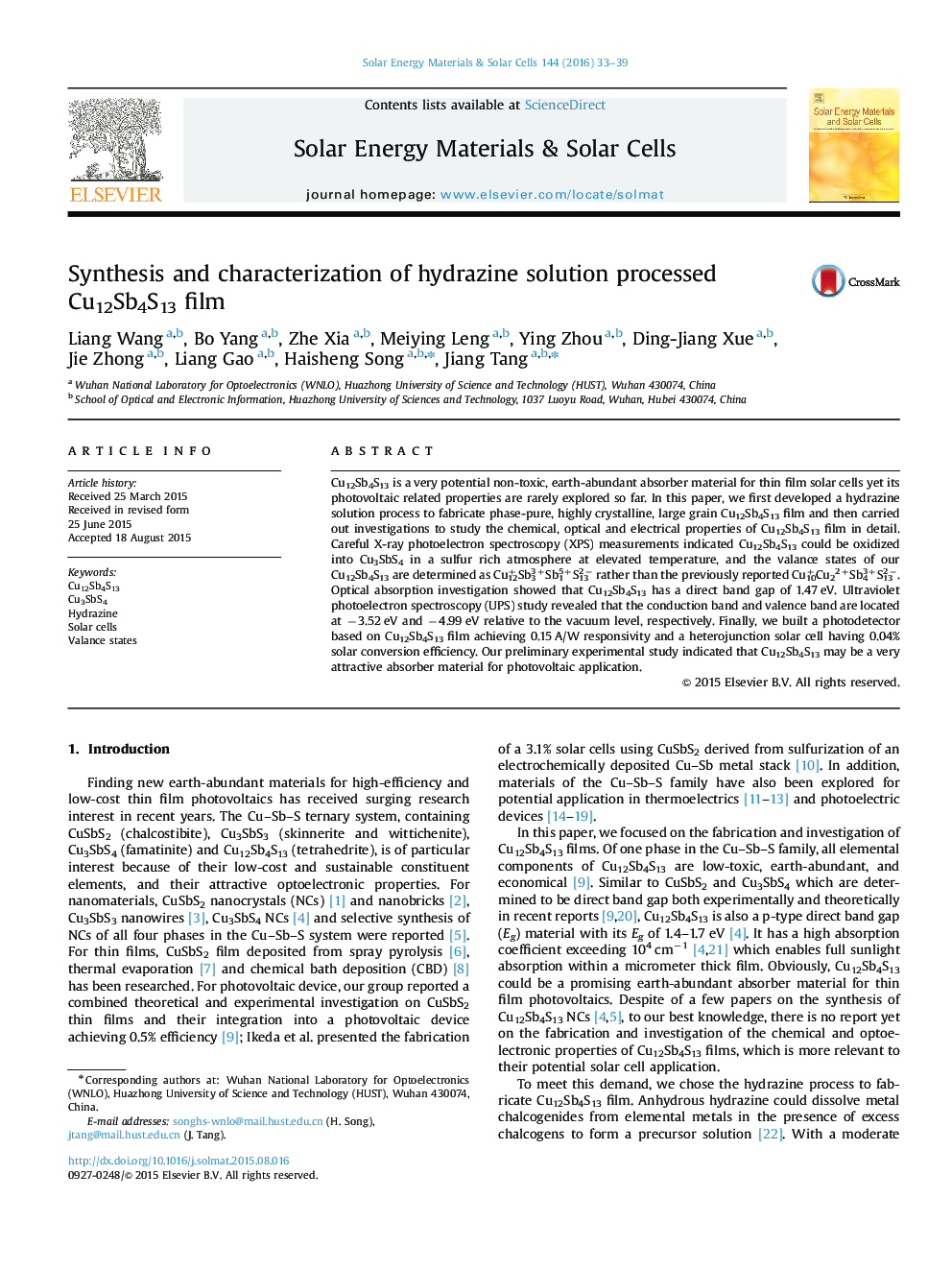| Article ID | Journal | Published Year | Pages | File Type |
|---|---|---|---|---|
| 6534863 | Solar Energy Materials and Solar Cells | 2016 | 7 Pages |
Abstract
Cu12Sb4S13 is a very potential non-toxic, earth-abundant absorber material for thin film solar cells yet its photovoltaic related properties are rarely explored so far. In this paper, we first developed a hydrazine solution process to fabricate phase-pure, highly crystalline, large grain Cu12Sb4S13 film and then carried out investigations to study the chemical, optical and electrical properties of Cu12Sb4S13 film in detail. Careful X-ray photoelectron spectroscopy (XPS) measurements indicated Cu12Sb4S13 could be oxidized into Cu3SbS4 in a sulfur rich atmosphere at elevated temperature, and the valance states of our Cu12Sb4S13 are determined as Cu+12Sb3+3Sb5+1S2â13 rather than the previously reported Cu+10Cu22+Sb3+4S2â13. Optical absorption investigation showed that Cu12Sb4S13 has a direct band gap of 1.47Â eV. Ultraviolet photoelectron spectroscopy (UPS) study revealed that the conduction band and valence band are located at â3.52Â eV and â4.99Â eV relative to the vacuum level, respectively. Finally, we built a photodetector based on Cu12Sb4S13 film achieving 0.15Â A/W responsivity and a heterojunction solar cell having 0.04% solar conversion efficiency. Our preliminary experimental study indicated that Cu12Sb4S13 may be a very attractive absorber material for photovoltaic application.
Keywords
Related Topics
Physical Sciences and Engineering
Chemical Engineering
Catalysis
Authors
Liang Wang, Bo Yang, Zhe Xia, Meiying Leng, Ying Zhou, Ding-Jiang Xue, Jie Zhong, Liang Gao, Haisheng Song, Jiang Tang,
